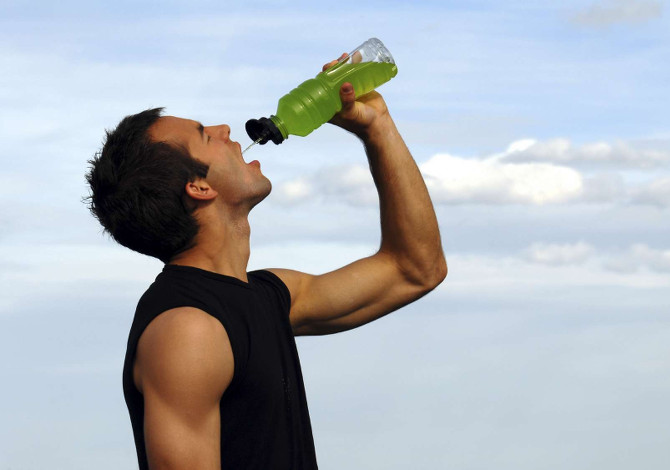The big, substantial difference between sports drinks is the quantity of particles present in suspension inside them, or their osmolarity. The drinks that are used to replenish the mineral salts lost during sports practice are in fact divided into isotonic, hypotonic and hypertonic based on the number of moles. That is, of mineral salts, but also carbohydrates, preservatives and artificial sweeteners that are found inside them and at the ratio of this number of particles compared to human plasma.
Sports drinks: the difference between isotonic, hypotonic and hypertonic drinks
And it is precisely the osmolarity level of the drink in relation to that of the plasma that ensures that the drink can rehydrate more or less quickly according to need or provide energy, also in this case more or less quickly.
What are isotonic drinks?
Beverages isotonic are those that have an osmolarity equal to that of human plasmawhich usually fluctuates between 280 and 330mOsm/kg.
Precisely because of this substantial equivalence of concentration of the solute, isotonic drinks are those most indicated when it comes to rehydrating the body quicklyfor example during intense physical activity in conditions of high temperatures: the same osmolarity of the sport drink and plasma ensures that the electrolytes necessary to rehydrate (mineral salts) are supplied without altering the plasma solution balance .
By the same reasoning isotonic drinks are also those indicated when there is a need for immediate energy. This does not mean that all isotonic drinks are also energy drinks: in fact, they are when they also have a carbohydrate component of about 8%.
What are hypotonic drinks?
The drinks hypotonic are those with an osmolarity lower than that of plasmai.e. with a lower amount of solute inside them than that found in human plasma.
Hypotonic sports drinks also allow for rapid rehydration. But there is a price to pay. That is, having a lower concentration of moles inside them they also substantially dilute the salt concentration of human plasma. With the consequence of decreasing the sensation of thirst but also of impoverishing the supply of necessary electrolytes.
What hypotonic drinks cannot do (or do to a limited extent) is provide immediate energy, due to their low carbohydrate content.
What are hypertonic drinks?
Beverages hypertonic are those with a higher solute concentration than that of human plasma.
This higher osmolarity is given by the presence of a high carbohydrate content, which is useful for providing long-term energy but certainly not for rehydrating or energizing on the spot.
There is also another consequence deriving from the intake of hypertonic drinks: due to their greater concentration of moles compared to plasma they tend to draw fluid into the intestines. Precisely for a matter of osmolar balance of the human organism, with the potential consequences of dehydration and diarrhea.
What sports drinks to use?
Up to an hour of even intense physical activity and in conditions of normal temperatures, still water associated with the normal consumption of fruit and vegetables is enough. That is, it serves to supply liquids, mineral salts and other components necessary to counteract dehydration.
Beyond the hour of sport and in conditions of intense heat, however, isotonic drinks are certainly indicated and partly hypotonic ones. In fact, when you sweat, you lose more fluids than mineral salts. sweat is a hyposmotic liquid, with a solute concentration of about 80-180 mOsm/l well below the 280-330 mOsm/l of plasma.
And unless there are high energy needs, it is not necessary to resort to hypertonic drinks.
Read also
Sports drinks: what do they really contain?
Supplements and running: which ones to drink when it’s hot
Supplements and sports drinks: which ones to choose and when to use them
Photo by Harold Wainwright on Unsplash / Photo on Anna Shvets and Pexels
Advertising
